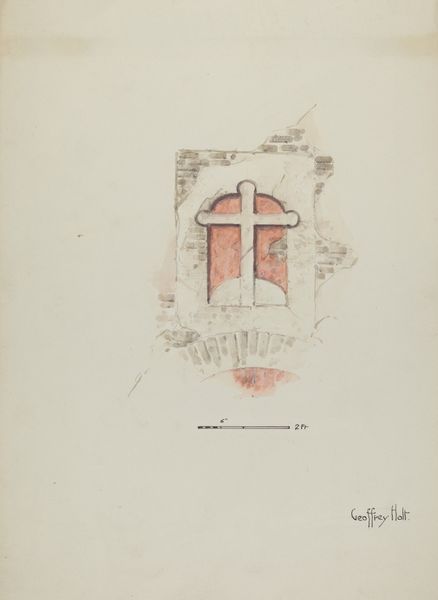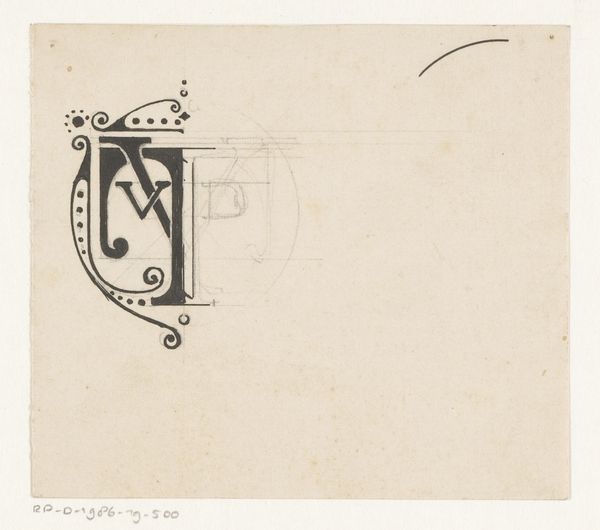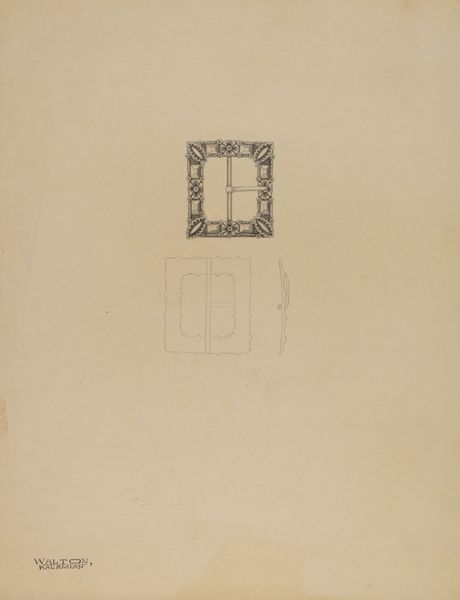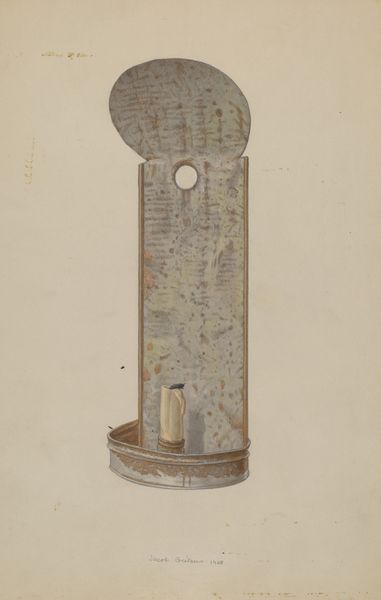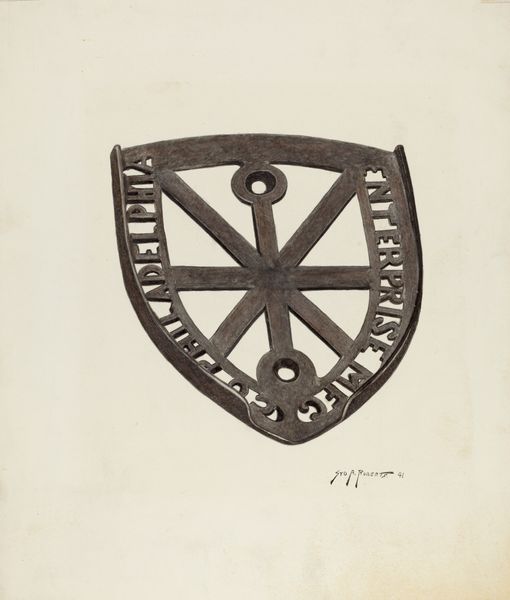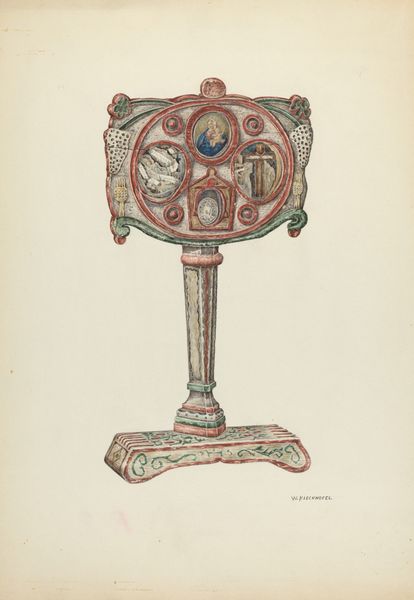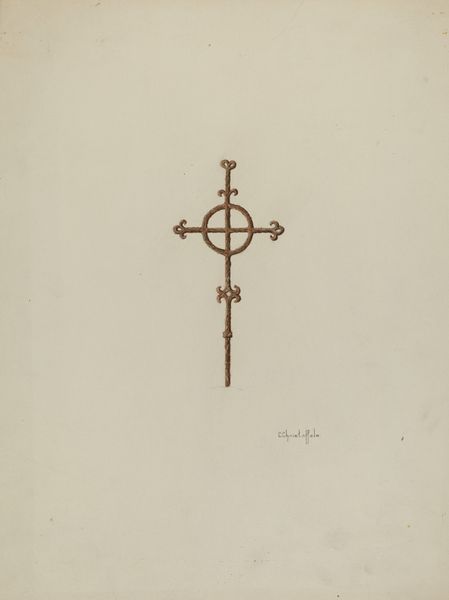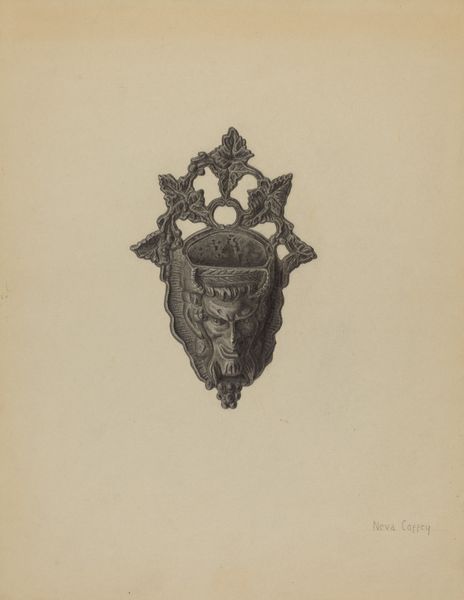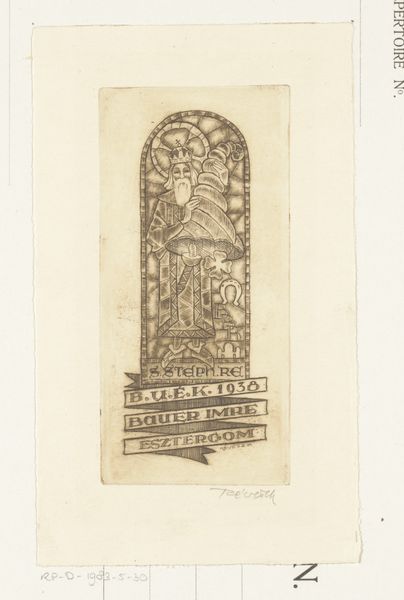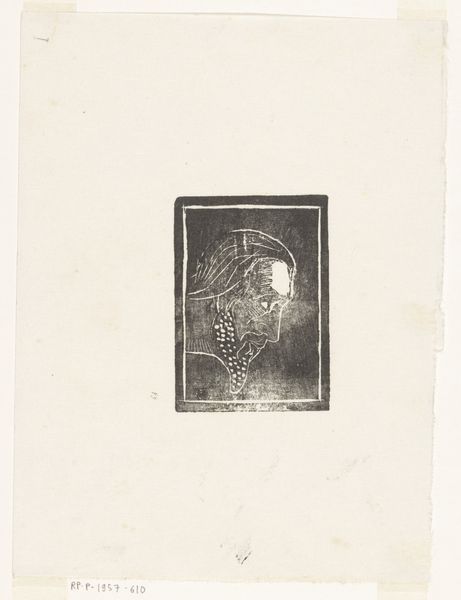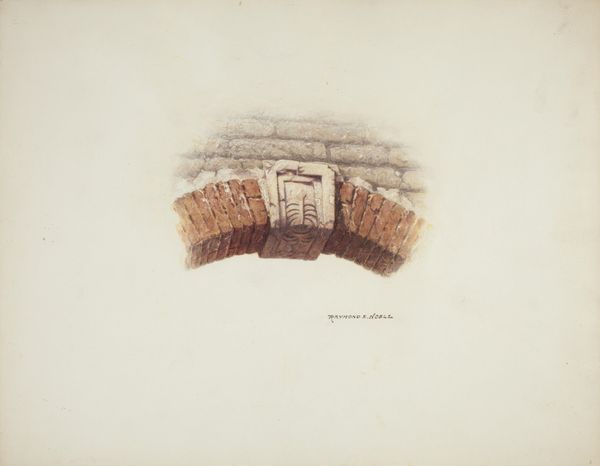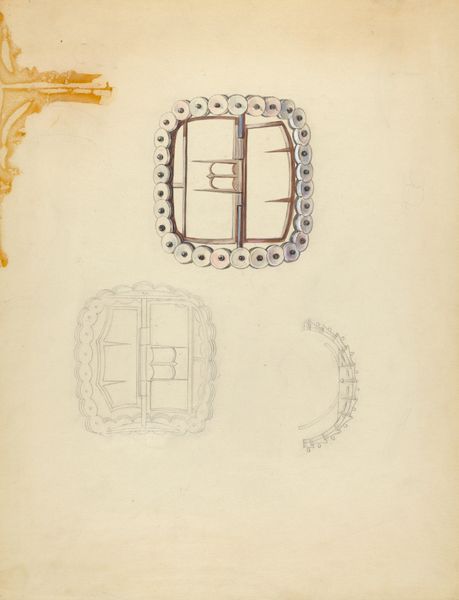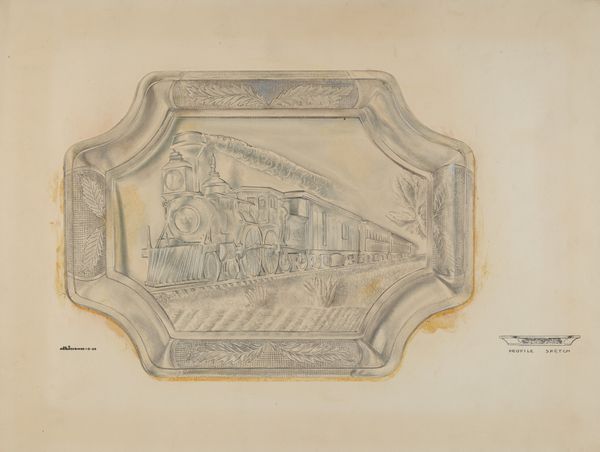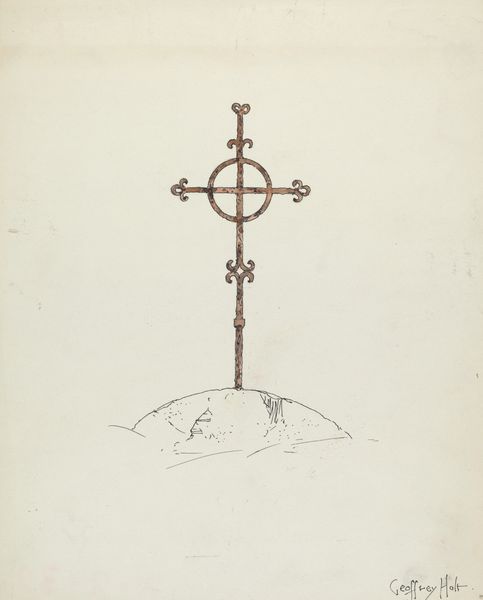
drawing, plein-air, watercolor
#
drawing
#
plein-air
#
landscape
#
watercolor
#
watercolour illustration
#
academic-art
Dimensions: overall: 35.5 x 24.9 cm (14 x 9 13/16 in.) Original IAD Object: 6" to 2'=scale
Copyright: National Gallery of Art: CC0 1.0
Curator: So, we have before us Geoffrey Holt’s "Cross over Main Entrance to Mission" from around 1937, a plein-air watercolor drawing. Editor: It feels like a fragment of a larger narrative, doesn't it? I'm curious about this lone architectural detail, starkly rendered in watercolor. What draws your eye to this piece? Curator: I see here not just a religious symbol or landscape, but a depiction of material decline, recorded through labor. Look at the way the watercolor is applied so thinly. It's a cost-effective medium reflecting possibly a strained economy during the Depression era, impacting even the documentation of religious structures. Consider, too, how plein-air emphasizes the accessibility of art creation. It's immediate, requiring little in the way of capital. What do you make of the bricks? Editor: They seem sketched in loosely, more like impressions than precise representations. It's interesting that you emphasize the economics of the time—how the medium itself becomes a comment on the state of things. Curator: Exactly. And think about the social context: missions often involved forced labor. This red cross becomes, perhaps unintentionally, a symbol tied to a more complicated history of exploitation and the materials it relies on, even in its crumbling state. We're considering both the spiritual and the material production tied together. Does the 'academic art' style also possibly comment on class differences, consumption or maybe a rising sense of nationalism? Editor: That gives me a lot to consider. I never thought about how the materials and the act of creating this piece might reflect the bigger picture. Thank you. Curator: Indeed! Art invites this reflection. Focusing on production gives voice to what might otherwise remain unseen or unsaid in this watercolor sketch.
Comments
No comments
Be the first to comment and join the conversation on the ultimate creative platform.
